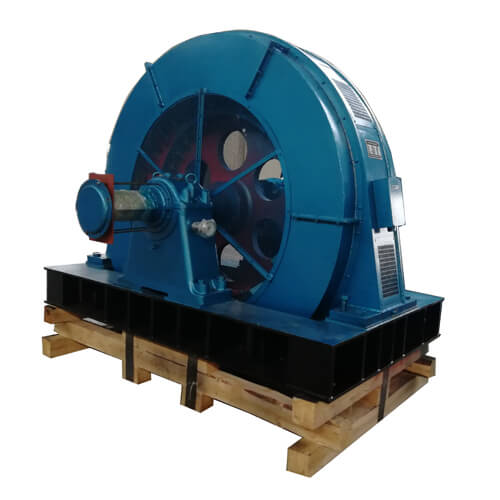In industry, induction motors are used mainly because of their low cost, robust construction, good starting torque and low maintenance. Synchronous motors are rarely used in industry for drive applications. Below ZCL explains some of the advantages and disadvantages associated with synchronous motors and their applications.
A synchronous electric motor is an AC electric motor in which, at a steady state, the rotation of the shaft is synchronized with the frequency of the supply current; the rotation period is exactly equal to an integer number of AC cycles. Synchronous motors use electromagnets as the stator of the motor which create a magnetic field that rotates in time with the oscillations of the current. The rotor with permanent magnets or electromagnets turns in step with the stator field at the same rate and as a result, provides the second synchronized rotating magnet field. Doubly-fed synchronous motors use independently-excited multiphase AC electromagnets for both rotor and stator.

Synchronous and induction motors are the most widely used AC motors. Synchronous motors rotate at a rate locked to the line frequency since they do not rely on induction to produce the rotor's magnetic field. Induction motors require slip: the rotor must rotate at a frequency slightly slower than the AC alternations to induce current in the rotor.
1 . Synchronous motors can operate over a wide range of power factors, including hysteresis and overrunning.
2 . They can be constructed with a wider air gap than induction motors, which makes these motors more mechanically stable.
3 . Synchronous motors are less costly in certain kW and speed ranges. They typically operate at higher efficiencies at low speeds with uniform power factors.
5 . It can be constructed with a wider air gap than an induction motor, which allows it to be mechanically stroked.
5. Over-excited synchronous motors can have an over-excited power factor and can be operated in parallel with induction motors and other lagging power factor loads, thus improving the system power factor.
6. In synchronous motors, the speed remains constant regardless of the load. This characteristic helps industrial drives.
7. Compared to induction motors, synchronous motors usually operate at higher efficiency.
1,. Synchronous motors require DC excitation, which must be provided by an external power source.
2. Synchronous motors are not inherently self-starting motors and require special methods to make them self-starting.
3. The cost per kW output is generally higher than induction motors.
4. These motors cannot be used for variable speed applications because the speed cannot be adjusted unless the input power frequency is adjusted.
5. Synchronous motors cannot be started with a load. If the load changes suddenly, hunting will occur.
6. When a synchronous motor is loaded beyond its capacity, the rotor and stator rotating magnetic fields lose synchronization and the motor stops.
7. Synchronous motors require collector rings and brushes, resulting in increased maintenance.
8. Synchronous motors are not suitable for applications that require frequent starting or require high starting torque.
1 . An overexcited synchronous motor runs at the leading power factor and takes the leading current from the sink bar, so it can be used to improve the power factor of the overall installation.
2 . Synchronous motors are also used to regulate the voltage at the end of the transmission line.
3 . Typical applications for high-speed synchronous motors are fans, blowers, pumps and compressors.
4 . Since synchronous motors can have speeds as low as 120 RPM, they are ideal for direct connection to reciprocating compressors.
5 . Pulp mixers and mills, steel and metal mills, and rock and ore crushers are often connected to motors or geared.
Please contact us to get the synchronous motors you want! We also have permanent magnet synchronous motors for sale.
Copyright © ZCL Electric Motor Technology Co., Ltd. All Rights Reserved | Sitemap | Powered by 